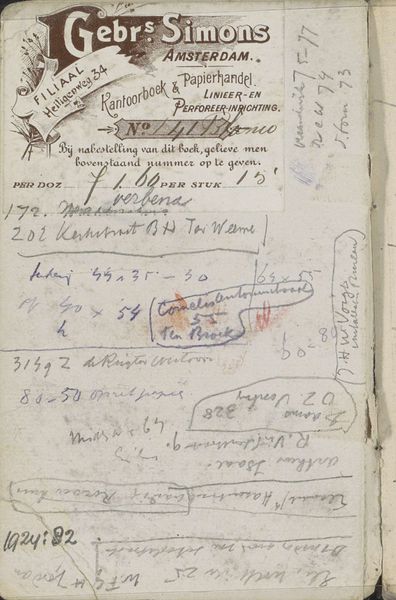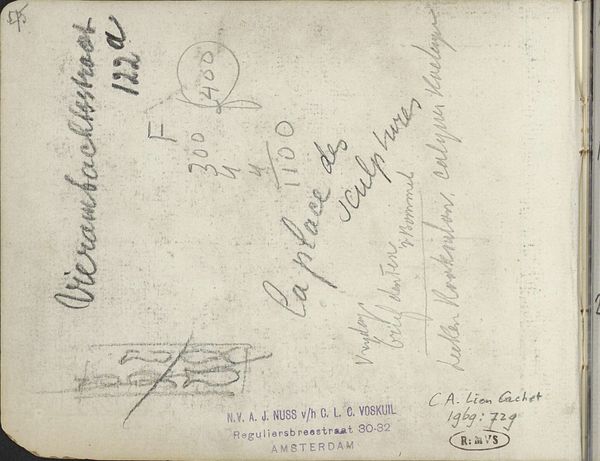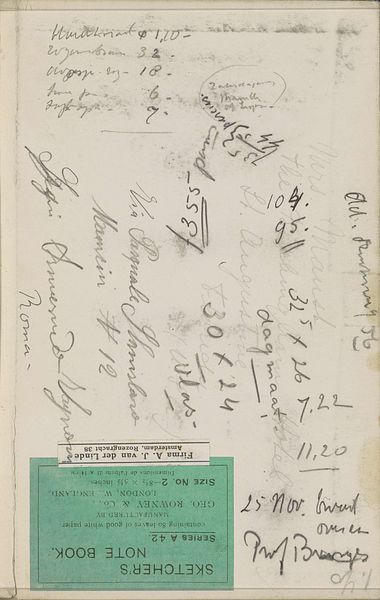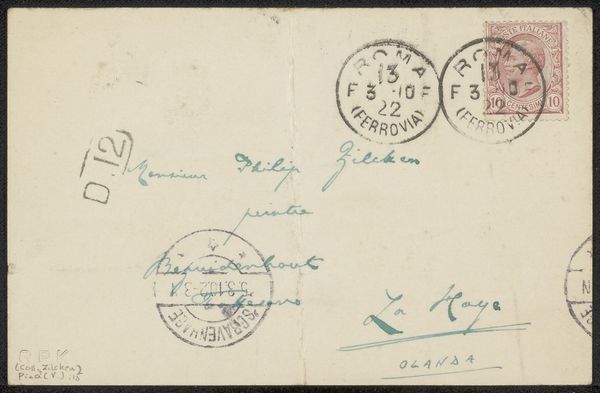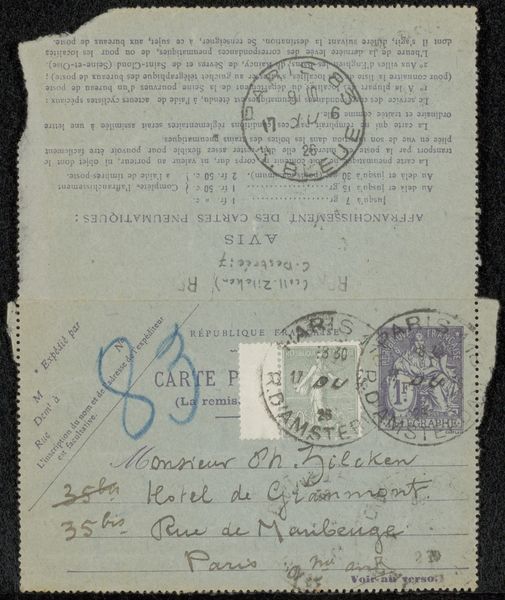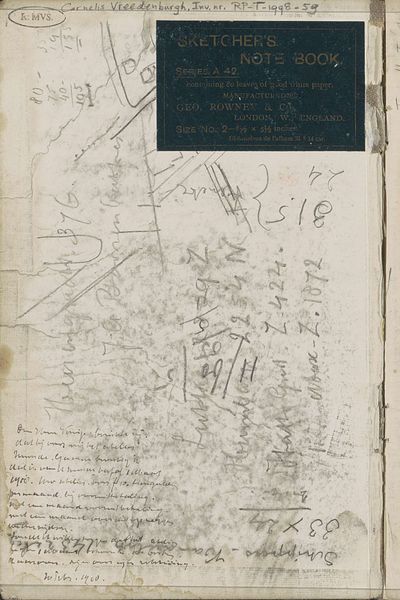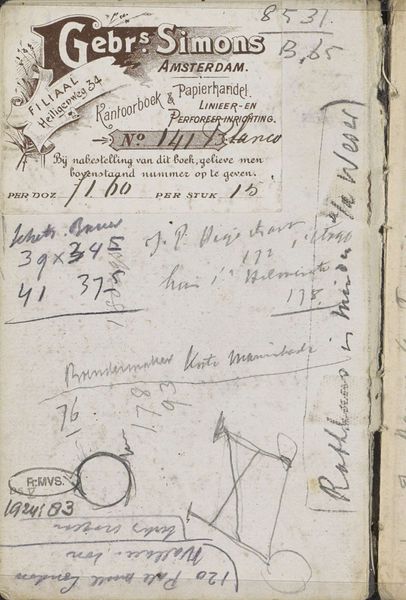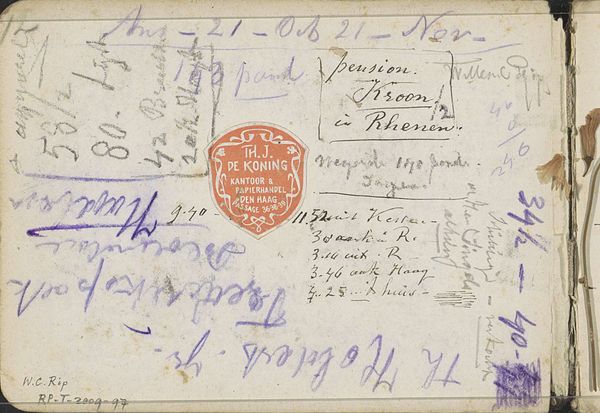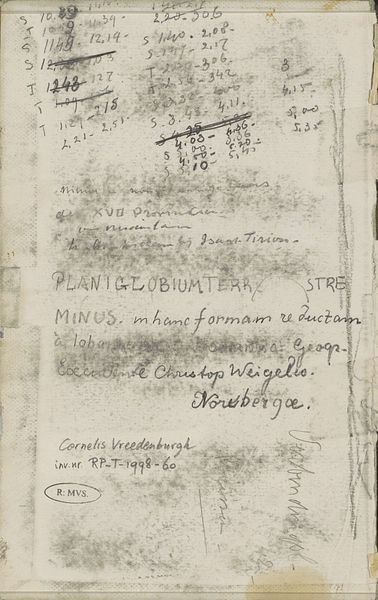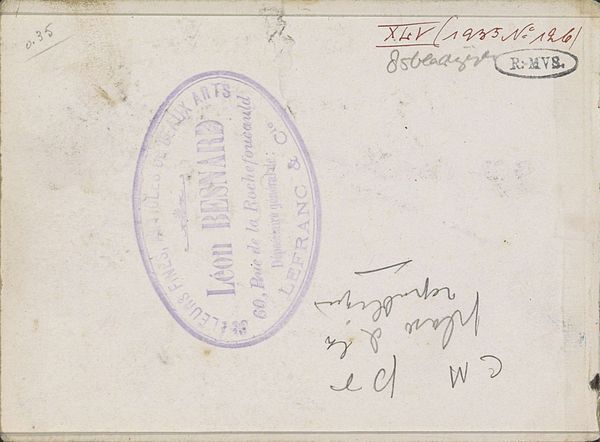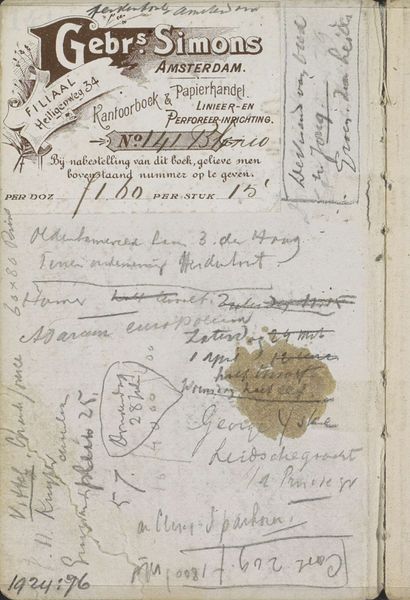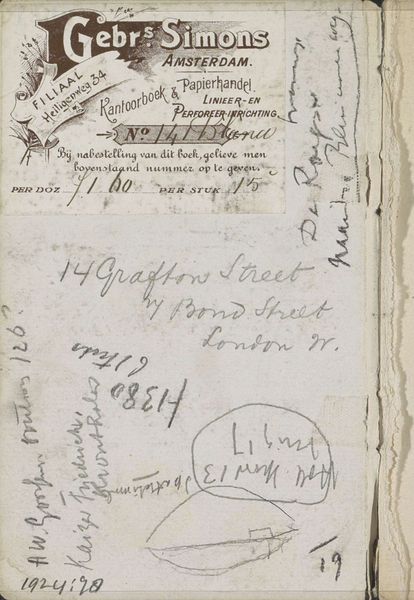
drawing, paper, ink, graphite
#
drawing
#
paper
#
ink
#
graphite
Copyright: Rijks Museum: Open Domain
Editor: Cornelis Vreedenburgh's "Notities," dating between 1890 and 1946, is a drawing made with ink and graphite on paper. It looks like the back of a sketch pad filled with notes. What do you see in this piece that I might be missing? Curator: I see more than just preparatory sketches or random jottings. To me, this work offers a glimpse into the artist's creative process and perhaps also the societal structures that shaped their artistic expression. What do you make of the notes on dimensions? Editor: I thought maybe they were notes about potential painting sizes. Curator: Precisely. But let's consider why such meticulousness might have been necessary. During this period, artists often navigated a complex web of patronage, exhibition requirements, and market demands. Do you think these dimensions might represent constraints imposed upon the artist by these forces, or, conversely, Vreedenburgh trying to break such constraints and express freedom? Editor: Hmm, maybe a bit of both? It's interesting to think of even mundane notes reflecting those kinds of pressures. And this almost feels like an intersectional study -- the social pressures interacting with an artist’s identity. Curator: Exactly. And notice the brand of the sketchbook. The commodification of art supplies connects with broader questions of labor and the art market. Think about how access to such materials might have been restricted, and how those restrictions may have marginalized groups throughout the art world. Editor: This definitely gives me a different perspective on the work! It is a peek at the conditions that formed the artist's production! Thank you for illuminating all of this for me. Curator: The pleasure is mine. Examining the seemingly mundane through a critical lens allows us to unearth compelling narratives about the relationship between art, power, and society.
Comments
No comments
Be the first to comment and join the conversation on the ultimate creative platform.
